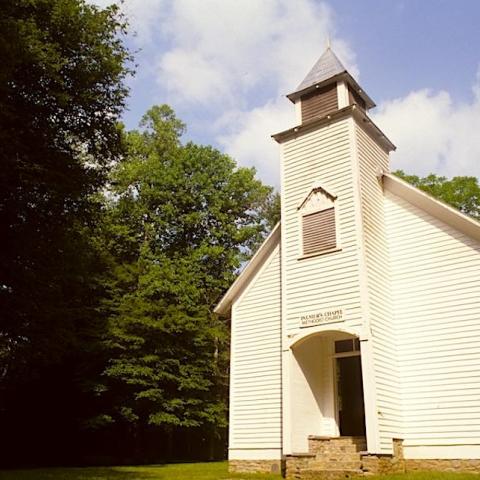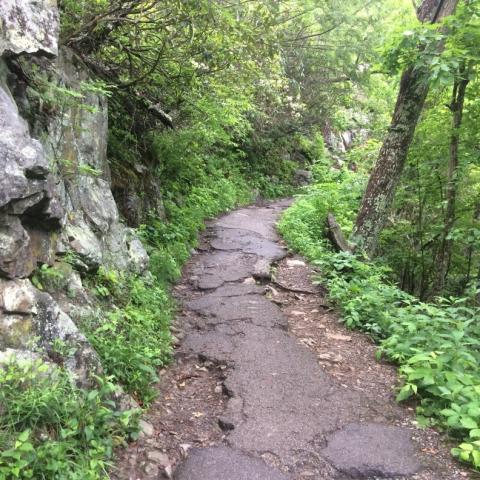
It took five shots, over a three-day period, to kill a black bear at Great Smoky Mountains National Park/Tennessee Wildlife Resources file photo
Five shots over three days were needed to kill a young Great Smoky Mountains National Park black bear linked to a ginseng poacher who turned up dead in the park last month.
But the necropsy that pinpointed the bullet wounds failed to reach a conclusion as to whether the 155-pound bear attacked and killed William Lee Hill, Jr., 30, of Louisville, Tenn., whose body was found September 11 in the woods about 2 miles north of Cades Cove and about a half-mile from the Rich Mountain Road.
When searchers found his body, which had signs of being fed on by predators, they also encountered a black bear that was acting aggressively towards them.
Since it wasn't known whether the bear had killed Hill or fed on his body, a decision was made to sedate the bear and place a GPS radio collar on it and let it go pending further information, park staff said at the time. The next day, park staff, in discussions with Superintendent Cassius Cash, decided to destroy the bear.
While park staff announced on September 16 that the bear was killed that morning near where Hill's body was found, what they didn't say at the time that there had been an earlier attempt to shoot and kill the bear. Nor did they say the bear was shot to death, instead of being tranquilized and then put to death with a toxic cocktail of drugs.
Great Smoky spokeswoman Dana Soehn, who was on temporary assignment in the Park Service's Atlanta regional office at the time of the incident, told the Traveler upon her return that "the biologists spent several days tracking the bear and were consistently challenged by weather, terrain, thick vegetation, and the elusive behavior of the bear. The bear was located on the second day of tracking in a thick stand of rhododendron, and a biologist did attempt to shoot it, but the shot was not lethal. Three days later, park staff successfully located and euthanized the bear via gunshot (four shots)."
She was not sure whether park officials alerted visitors that there might be a wounded bear in the area.
According to the necropsy (attached below), the four shots fired on September 16 hit the bear, estimated to be 3 years old, in the skull, base of the right ear, the neck, and the left hind leg. The skull shot did not penetrate the brain, but deflected off into the chest. The earlier shot apparently grazed the bear in the right shoulder, according to the pathologist.
The bear did not seem in a weakened condition and desperate for food. Its teeth were in good shape, and its belly was "full" of acorn meat," noted the pathologist, who made no mention of human remains in the stomach.
"There are no lesions to explain the thin body condition or abnormal behavior of this bear," concluded the pathologist, Dr. Linden E. Craig, who works at the University of Kentucky.
On Monday the park spokeswoman, after discussing the incident Great Smoky Mountains National Park's wildlife biologist, said shooting a bear in the brain is considered to be a humane way to kill it under American Veterinary Medical Association guidelines.
"Obviously, given our field situations with terrain and dense vegetation, it is very difficult to closely approach a bear and shoot it in the brain," said Soehn in an email. "This bear was shot four times, including one to the head that did not penetrate the brain, within a matter of seconds to kill it and end its life as quickly and humanely as possible, and therefore, within the scope of these guidelines and the recommendations provided by the NPS veterinarian."




 Support Essential Coverage of Essential Places
Support Essential Coverage of Essential Places







Comments
Come on people, 3 days and 4 shots. More experienced personnel are available.
Next time hire bubba next door (Townsend) that knows how to hunt bear with the right weapon and ammunition
It's a unnecessary waste. The bear did suffer. These park rangers need more specialized training
Perhaps if the poacher wasn't illegally removing ginsing to begin with....
You're talking about the same Superintendent who allowed a fire to get out of hand and kill a dozen people in Gatlinburg, and the same regime who shot the wrong bear once again over 2 years ago when it attacked a boy over on the NC side, only to have the DNA prove they shot the wrong one.
Ineptitude. Thy name is NPS
What a sad waste of life. If you can't get the job done, don't shoot. Hire better, NPS.
While the headline makes this seem like the bear was in agony for 3 days here is another possibility. The first shot which "grazed the bear in the right shoulder" did little more than take a bit of hair and the bear wasn't harmed in the least. When they were able to catch up to the bear again they fired 4 shots to ensure the bear did not escape wounded. It is not often a single shot drops an animal immediately so a few added shots seem appropriate to make sure the bear doesn't suffer. Those shots may have occurred in seconds. I don't know the exact circumstances but would not automatically assume the bear suffered. The fact the first shot only "grazed" the bear is worth asking under what circumstances that shot was taken. I am also curious why they weren't able to use dna samples to learn if this is the bear in question? I assumed that would be standard practice but apparently I am wrong.
Wild, did you see the bear at the necropsy? Pathologist said the shot left a wound of roughly 2 inches through the muscle. Not sure I'd categorize that as "not harmed in the least."
As to whether "a few added shots seemed appropriate to make sure the bear doesn't suffer," the guidelines the park staff was following called for a killing shot to the brain...Since that shot was not delivered, how long the bear lingered before dying is something only those on site can say.